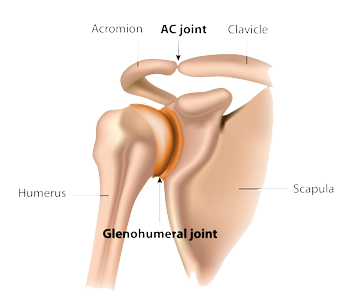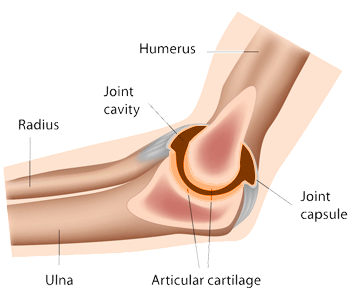Stem Cell Injections for the Shoulder
What are Stem Cells?
There are two types of stem cells: embryonic stem cells and adult stem cells. Both types are generally characterized by their potency, or potential to differentiate into different cell types (such as skin, muscle, bone, etc.) Adult stem cells are found throughout the human body and have remarkable healing abilities. These special cells have the ability to create new cells in existing healthy tissue which may help repair damaged areas within the joints, ligaments, bone and soft tissue of the shoulder. When stem cells divide, cells called progenitor cells are created. These cells are of particular interest to the orthopedic specialists at The Shoulder Clinic of Idaho because they have the potential to help form tendons, ligaments, articular cartilage and bone. Patients in Boise, Meridian, Nampa, and the surrounding communities of the Treasure Valley can discuss this form of regenerative medicine using stem cells with the shoulder specialists at The Shoulder Clinic of Idaho.
How are Stem Cell Injections Performed?
Adult stem cells are harvested from the bone marrow in a patient’s hip. This procedure is called bone marrow aspiration (BMA). The bone marrow donor site is numbed to reduce pain and ultrasound or x-ray guidance is used. The bone marrow is then spun in a centrifuge to separate the blood into various parts which include a healing combination of adult stem cells, white blood cells and platelets. This combination can then be injected directly into a patient’s injured shoulder to facilitate accelerated healing and tissue regeneration.
What are Allograft Stem Cells?
In some cases, donor stem cells called allograft cells can be used for specific shoulder conditions such as arthritis and tendon inflammation. Allograft stem cells are, in most cases, harvested from donor placenta tissue which is otherwise discarded after birth. The cells are isolated and processed in a sterile environment for use in a clinical setting.
Am I a Candidate for Stem Cell Injections?
It is important to note that stem cell therapy is not for everyone. The orthopedic specialist at Shoulder Clinic of Idaho can discuss the role of stem cell injections for patients with mild to moderate osteoarthritis, and for tendon injuries that have not responded to other conservative treatments. Older patients are sometimes offered alternative treatments because as the body ages, the ability to regenerate tissue from its own stem cells diminishes. After age 60, autologous (the body’s own) stem cell therapy typically fails to provide regeneration because there are not enough stem cells in the bone marrow. Patients in Boise, Meridian, Nampa, and the surrounding communities of the Treasure Valley will learn, in great detail, of about stem cell injection options from their orthopedic specialist at The Shoulder Clinic of Idaho.
How are stem cells used to treat arthritis?
Once a bone marrow sample is collected, and the white blood cells, platelets and adult stem cells are harvested, these three healing agents are combined and can be injected directly into a patient’s damaged shoulder joint. These special cells are thought to work together to promote regeneration of the shoulder and to decrease pain.
Stem cell therapy for arthritis uses a patient’s own “pluripotent” adult stem cells instead of more controversial embryonic or fetal stem cells. Autologous cells replicate the healing benefits of embryonic stem cells without ethical concerns. Stem cell therapy may provide an alternative treatment option for patients suffering from various forms of arthritis, including osteoarthritis. Moreover, stem cells may lessen symptoms of early arthritis, potentially delaying the need of joint replacement surgery.
How are stem cell injections used for rotator cuff injuries?
The rotator cuff is a critical structure within the shoulder that provides stability and strength to the joint. When one of the muscle-tendon units that compose the rotator cuff experiences a tear, treatment is often necessary. In cases of a partially torn rotator cuff, a patient’s own bone marrow can be extracted from the hip area. The sample of bone marrow is then spun in a special machine in order to separate the platelets, white blood cells and adult stem cells from the red blood cells. Once the three healing agents are separated, they are combined again, and the physician can inject the stem cells directly into the injured rotator cuff region to help regenerate tissue and accelerate healing.
Are stem cells injections new?
Relatively speaking, stem cell injections are relatively new and not commonly used in the shoulder, although the discovery of stem cell treatment dates back to 1981. The most well-established and widely used stem cell treatment is the transplantation of blood stem cells to treat diseases and conditions of the blood and immune system; or to restore the blood system after treatments for specific types of cancers. The US National Marrow Donor Program has a full list of diseases treatable by blood stem cell transplant. Well over one million patients worldwide have been treated with adult stem cells and have experienced improved health.
Stem cell research arose from the need to explore new therapeutic possibilities for intractable and lethal diseases. For the shoulder, there are diseases which current treatment modalities do not offer satisfactory, efficient or durable results. These diseases have been targets of stem cell treatment. Stem cell injections continue to gain popularity as a safe and effective regenerative medicine technique designed to accelerate healing and regeneration following a shoulder injury.
To learn more about stem cell injections for the shoulder, and other biologic treatments as an alternative to shoulder surgery, please contact the orthopedic shoulder specialists at The Shoulder Clinic of Idaho, serving patients in Boise, Meridian, Nampa, and the surrounding communities of the Treasure Valley.


